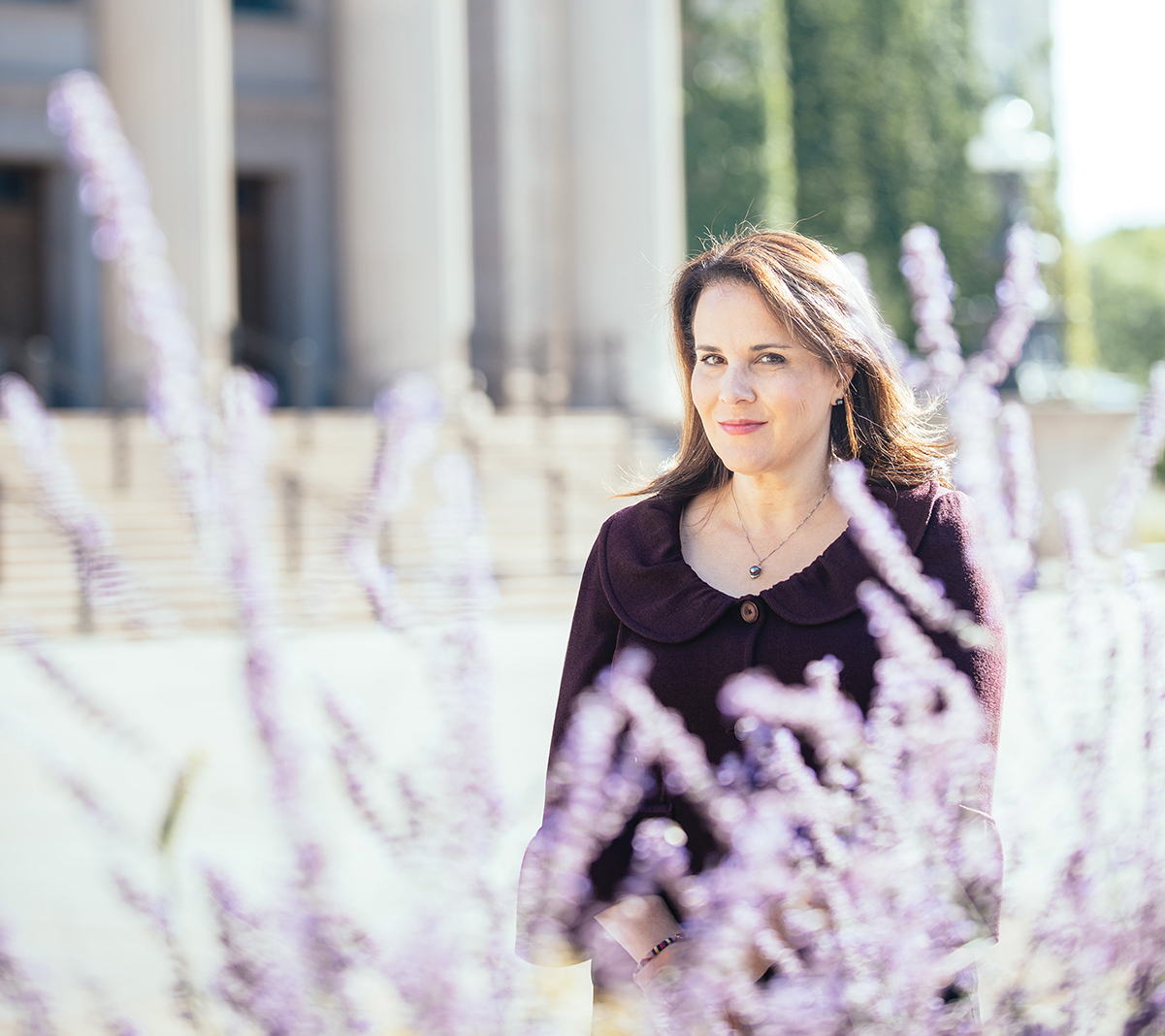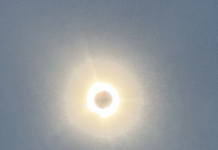
Photo by Nate Ryan
“Are we no longer going to have huddles of students around a microscope, or in a studio developing the next creative project?” asks president Joan T.A. Gabel as the 2020 school year approaches.
Back in the summer of 2019, Gabel had just taken the helm of the University of Minnesota (U of M) following former president Eric Kaler’s departure. She had a lot to get excited about, meeting with hundreds of faculty and students across all five campuses of the state’s biggest public university. “I have been impressed by the desire to connect to something bigger and bring the force of a comprehensive system to bear on preparing tomorrow’s workforce,” she’d said—also fielding plenty of questions about being the first woman appointed to the role in the school’s 167-year history.
Then, March 2020: Gabel was tasked with reimagining education in the wake of COVID-19. The university announced in July it would hold most fall classes fully online, with others in-person or in a hybrid format, and set mask and social distancing rules in dorms, dining halls, and campus buildings.
Then, May 2020: The police killing of George Floyd demanded a response, too. Gabel, who previously served as provost at the University of South Carolina, operates from a belief that a university should lead its community. This has guided her to partner with the Mayo Clinic in groundbreaking coronavirus-related research and to limit ties with the Minneapolis Police Department (MPD) in light of protests following Floyd’s death.
We found time in Gabel’s busy schedule to talk about distance learning, community-based policing, mental health, and where she orders from when she wants good takeout on a bad day.

Photo by Nate Ryan
You’ve been thrown a lot of curveballs after just one year. How have you reframed your approach in light of the “new normal” that has surfaced?
We’ve reframed how we convene for decision making, how we communicate. What we do as an institution is anchored in proximity, normally: being in class together, in the lab together. That can’t happen right now in the traditional way.
In the middle of all of this, we’ve focused on service. For example, med students who couldn’t go into the hospital pivoted to babysitting for frontline healthcare workers, and retired healthcare providers have been part of a core team that we can deploy into facilities where there aren’t enough trained hands on deck. We’ve pivoted to make sure our students continue to learn, but our service mission really bloomed in this way that reminds us universities can play a positive role at the worst of times.
Tell us about the university’s work to combat COVID-19.
We were the first to have the rapidly produced ventilator approved by the FDA. We’ve been part of over two dozen pharma studies on mitigating treatments and vaccines. We’re front and center in all research streams. We’re partnering with the government, state, and the Mayo Clinic as part of the team that is doing widespread statewide testing that has put us in the absolute top tier of accessibility of tests to the general public.
Let’s talk about the long game: How do you think remote learning will reshape the U of M?
I wish I knew the answer to the long-game questions. Lots of people are making predictions and projections, and the truth is nobody really knows. Rather than planning around possible outcomes, we’re planning around the uncertainty.
We’re one of the biggest employers in our community, and a lot of people will do their jobs differently: working from home, working in staggered ways. Lots of people will continue to work from home when this is over, and I’m sure we’ll still aim to be a part of that, too.
The question is what this means for the student experience. If you look historically, we existed as a university during the Spanish flu, and we migrated back to community. I suspect we will here, too. But there has been innovation that will last. We’ve had to be able to continue while 100% distanced. We will cherry-pick the best of that on behalf of our students so that more students can access educational opportunities.
The university made headlines for limiting ties with the Minneapolis Police Department in the wake of George Floyd protests. What will replacing that relationship look like?
We cut ties with MPD for what we call “special services.” Many students live in Minneapolis, so the need to keep those students safe means we need to continue to do joint patrol. We cut ties for the surplus, where we paid extra and sourced extra support from the Minneapolis Police Department. Some of those services we would simply procure elsewhere. Some of those services we will do ourselves. Some of those services we don’t need at all, because they’re tied to large events.
Then there’s the question of our own policing. We have our own police force: the UMPD. We are conducting an external review. Even though they’re an excellent police force and we’re very committed to student safety, that doesn’t mean there aren’t opportunities to engage the community more in how they do their work so that, from an equity point of view, everyone feels safe. We need expertise and guidance, and we need to lean into shared governance to make sure we do it right.
One of your major focus areas in your career has been diversity and inclusion. How has the U of M accelerated those efforts after the George Floyd protests?
We’re thinking about equity, and this isn’t new; it’s just catalyzed. We’re really trying to grab what Martin Luther King Jr. described as “the urgency of now.”
One of the biggest challenges is that there is often an implicit bias—by definition, something you don’t even know you have—and it’s very difficult to overcome. As a university, we look at the way we partner to create maximum opportunities for students to come in. What is a way to widen the funnel and maximize the number of students—not just the head count, but also the representativeness of students who come into campus? And how are we being a real partner and not just waiting to receive them? How are we making it possible for them to come financially? How are we setting up programs once they’re here, to make sure all students are successful?
Are we maximizing the opportunity for our faculty to do research that can improve climate on campus and in the community? Are we maximizing opportunities for staff to feel a sense of belonging and welcoming?
Students spend a lot of time with our professional staff. They see staff often more than faculty. We want to think about what it means to be a big institution in this community, and how we take our expertise outward. Are we helpful as consultants for some of the effective community leadership in Minneapolis, or around the state and around the world?
The mental health of students is a big focus for you, as well. How does the university plan to address the mental health crises that accompany a pandemic, George Floyd’s murder, and a recession?
There have been lots of documented increases in a variety of mental health challenges, like anxiety, fear, isolation, and the resulting consequences. Many of our students are especially vulnerable; the general stress that everyone is feeling impacts people in different ways. We had some operational issues we did, to [set up] student mental health services online. That all happened in the spring. We made services available widely, increasing the reach through different technology platforms. One of the things about this that has changed so much is that very few things are “9 to 5” right now. Everything is sort of “all the time.” That would include the need for people to be able to reach support when they need it. We’ve really been working at expanding our technological reach, so students can access support where they are.
You’re still in the process of making Minnesota your home. What outdoor areas or takeout spots have kept your head up on long days?
I did my first North Shore escape after my husband arrived. When you move to this area from outside, one thing you notice is the cabin culture. Blissfully, one of the things you can still do is be outside. So, we worked our way up and back down most of the North Shore, all the way up to Grand Marais. It was just so beautiful.
We live in St. Paul, and we absolutely love Estelle. We started going right after it opened, and it became our spot. We’ve all been worried about our restaurant owners. We’ve seen how hard this has hit them. Now, they’re available for pickup again. It’s just around the corner. It feels like our neighborhood place.
For updates on the University of Minnesota’s COVID-19 response, visit safe-campus.umn.edu/public-health-alerts









